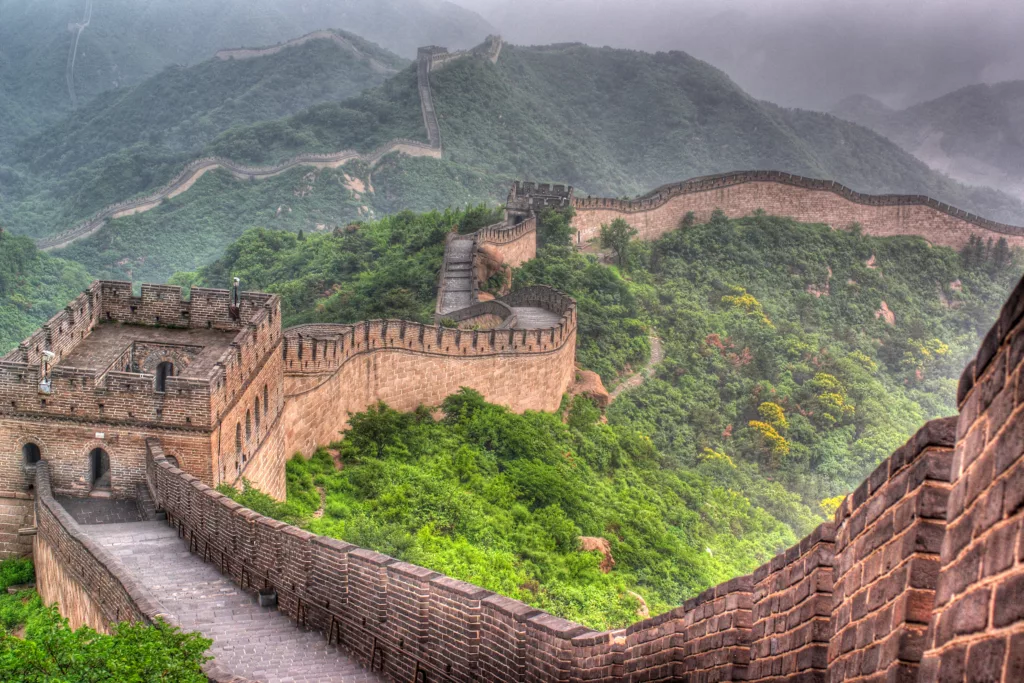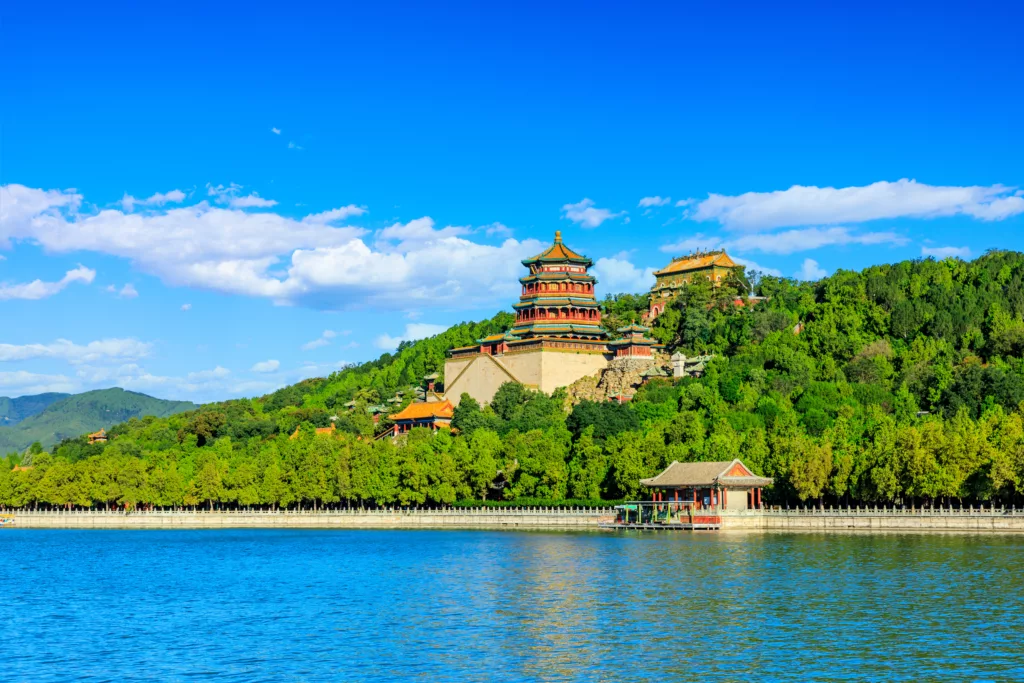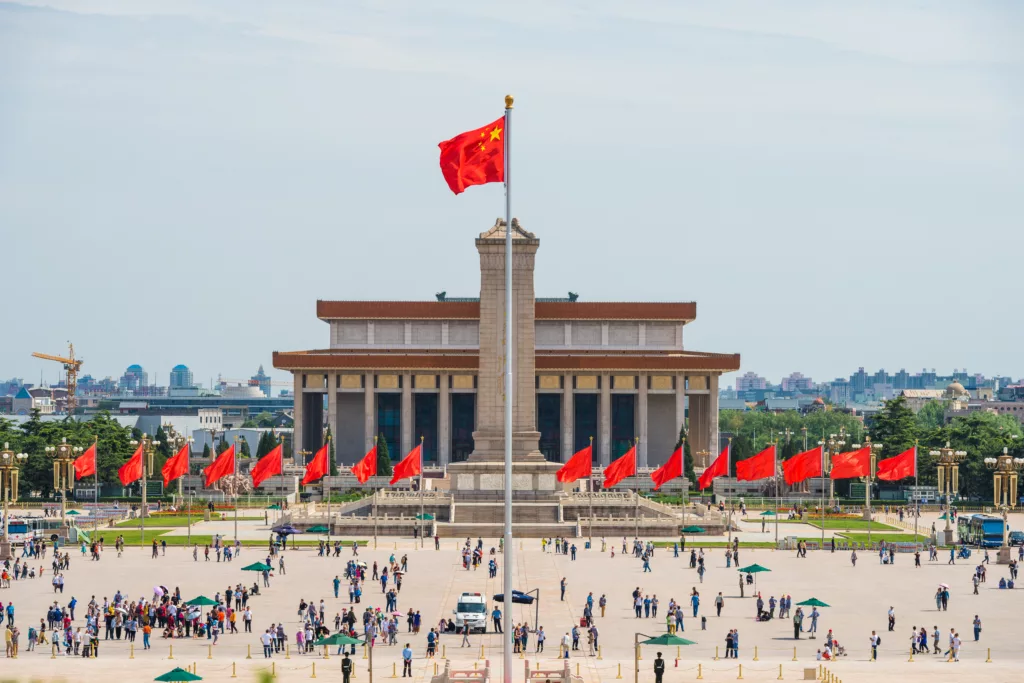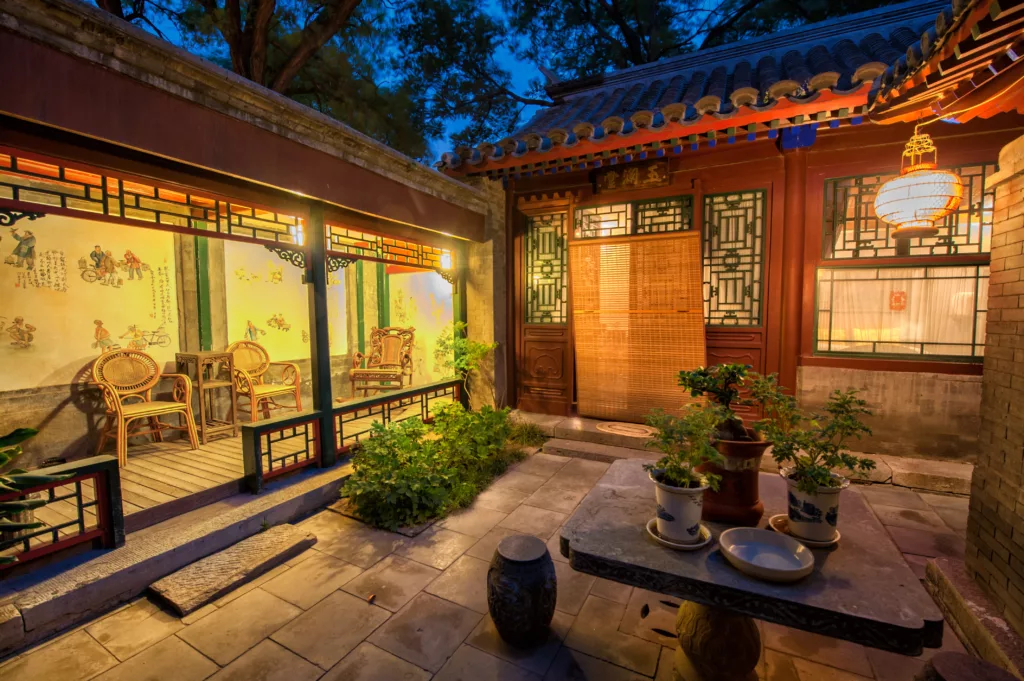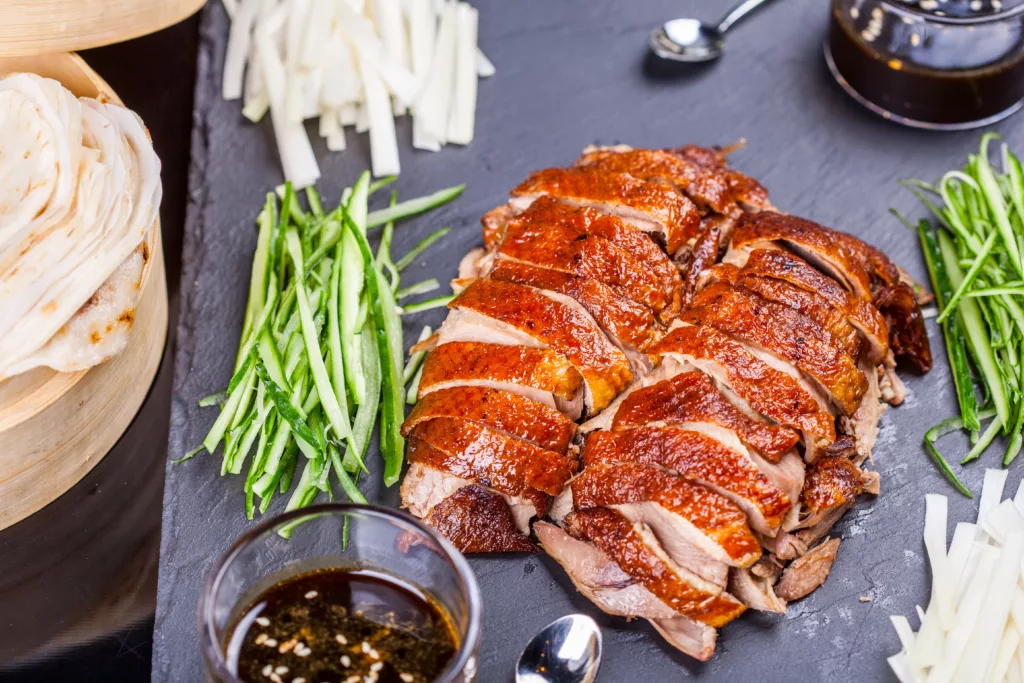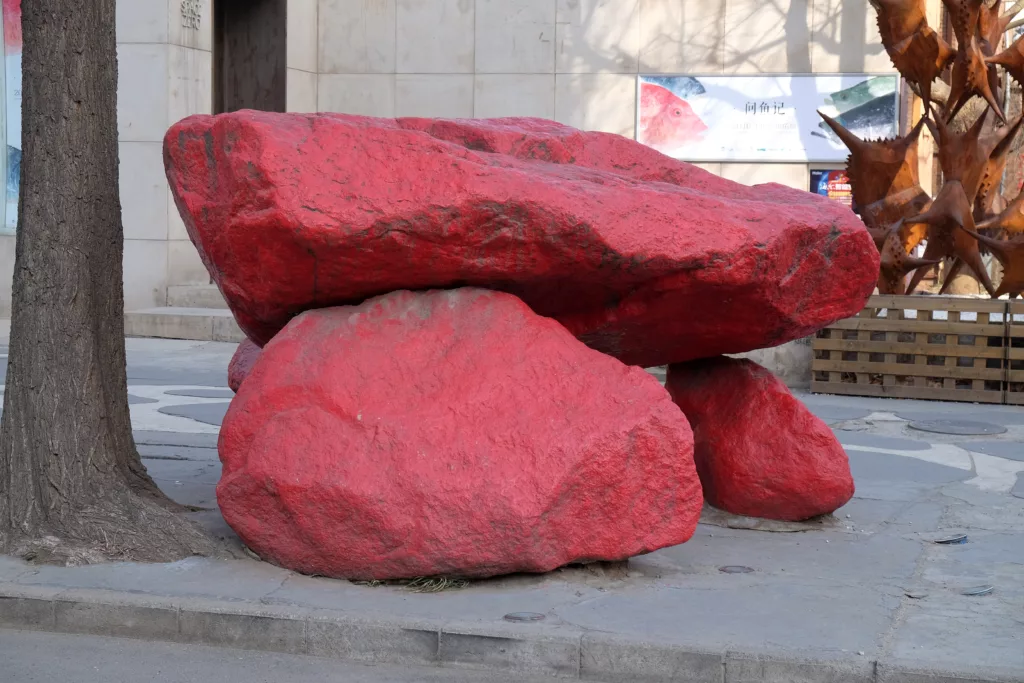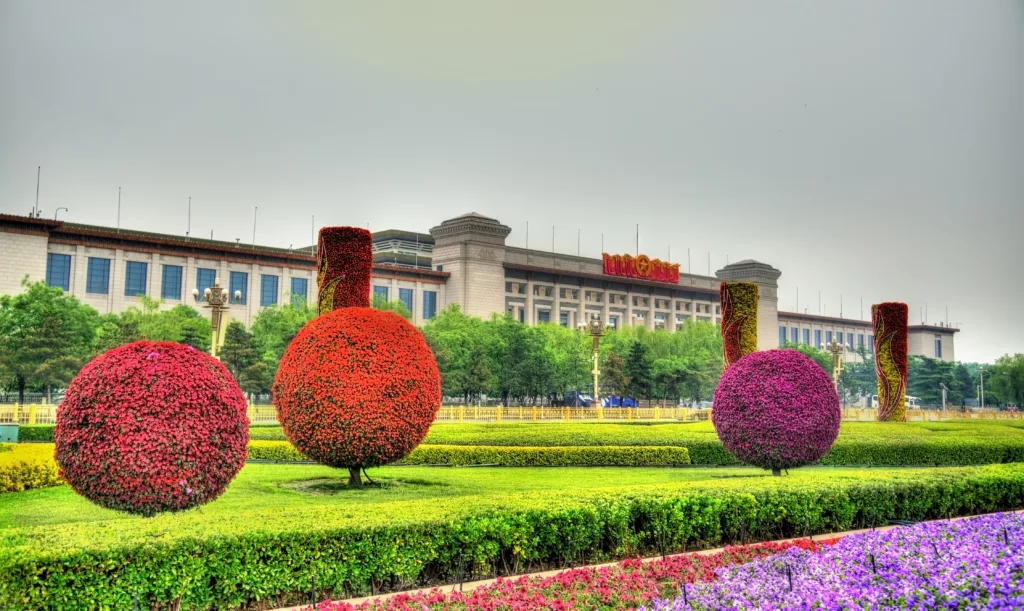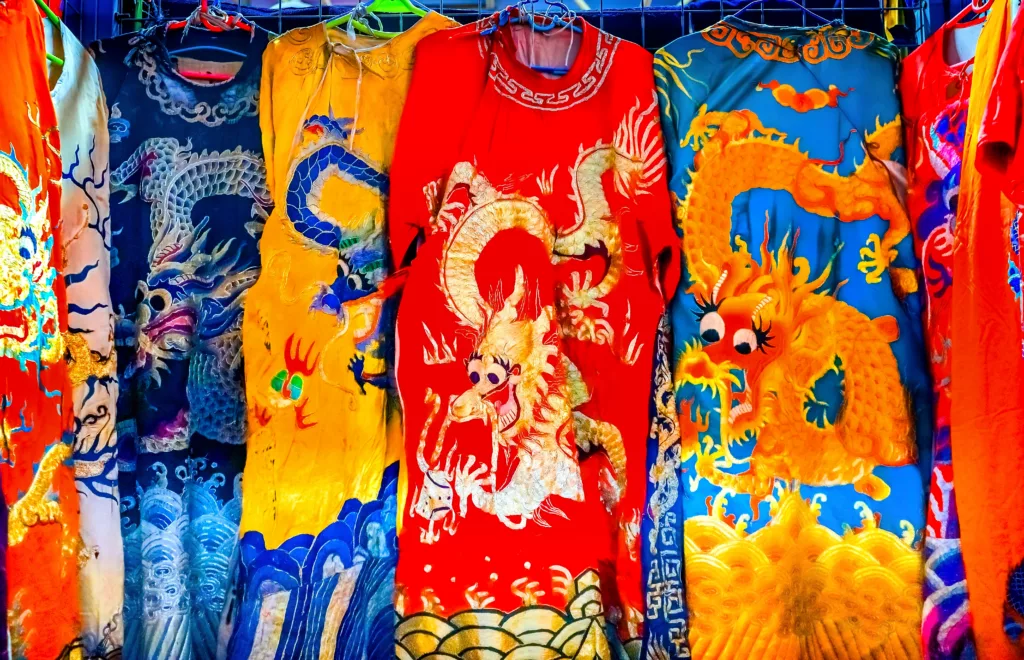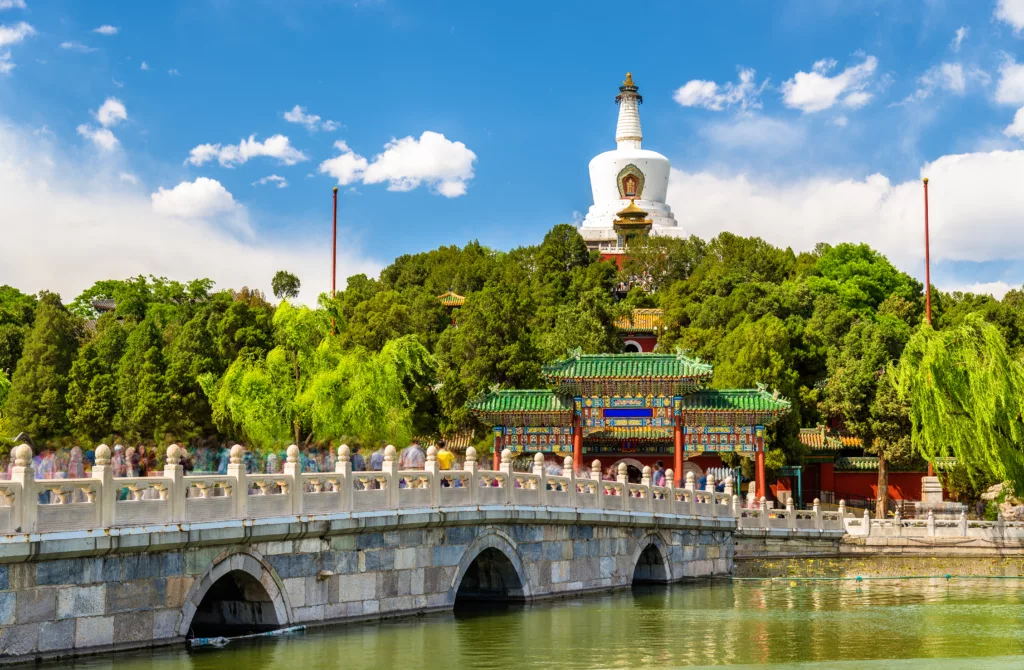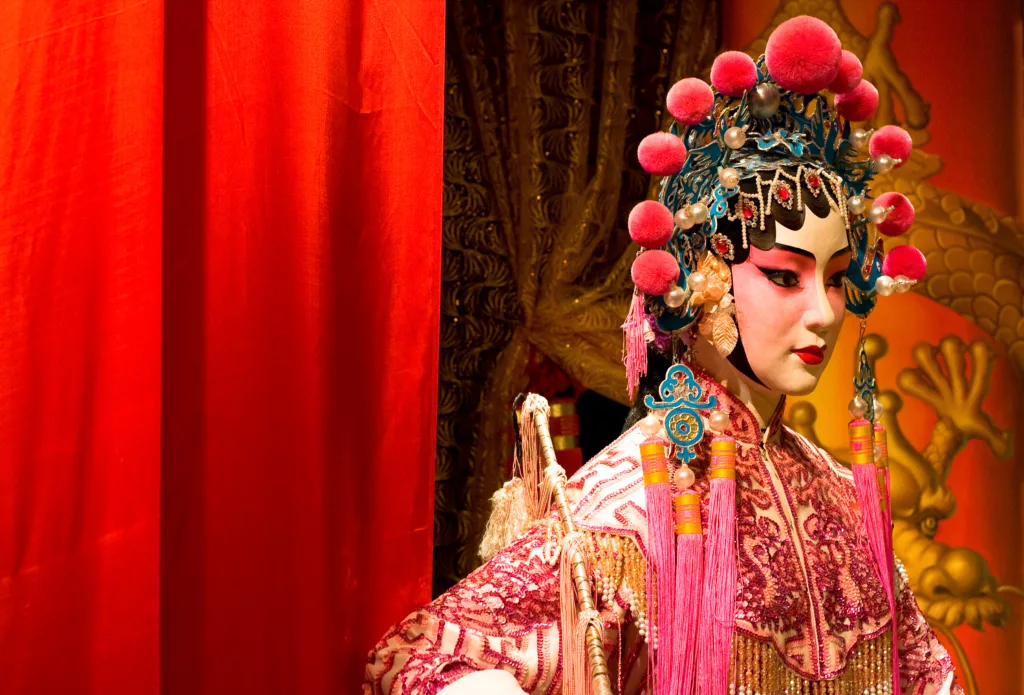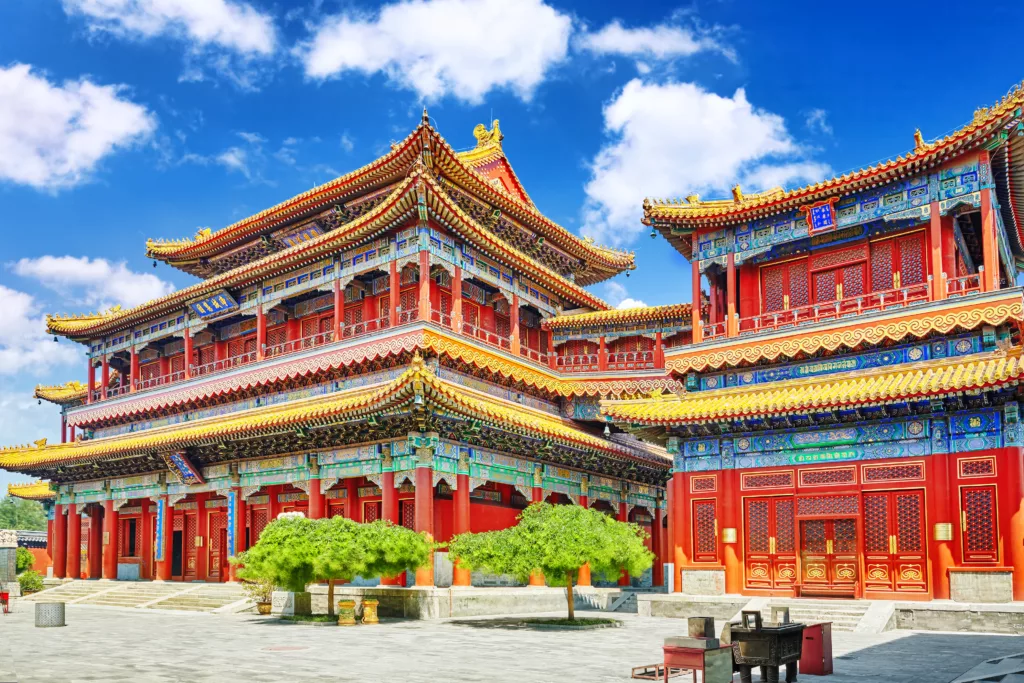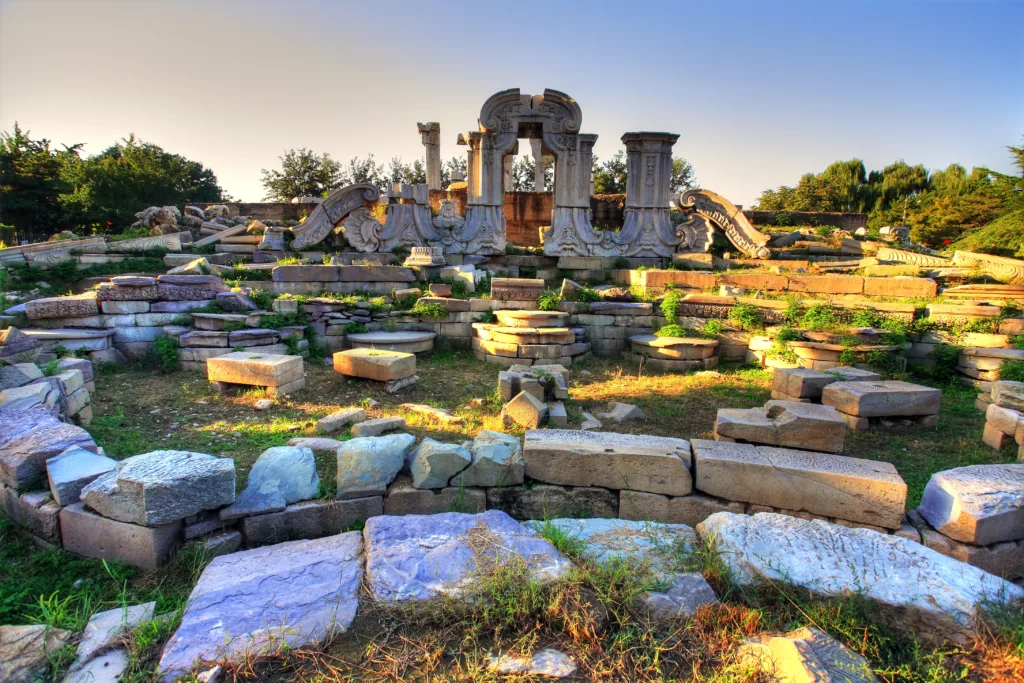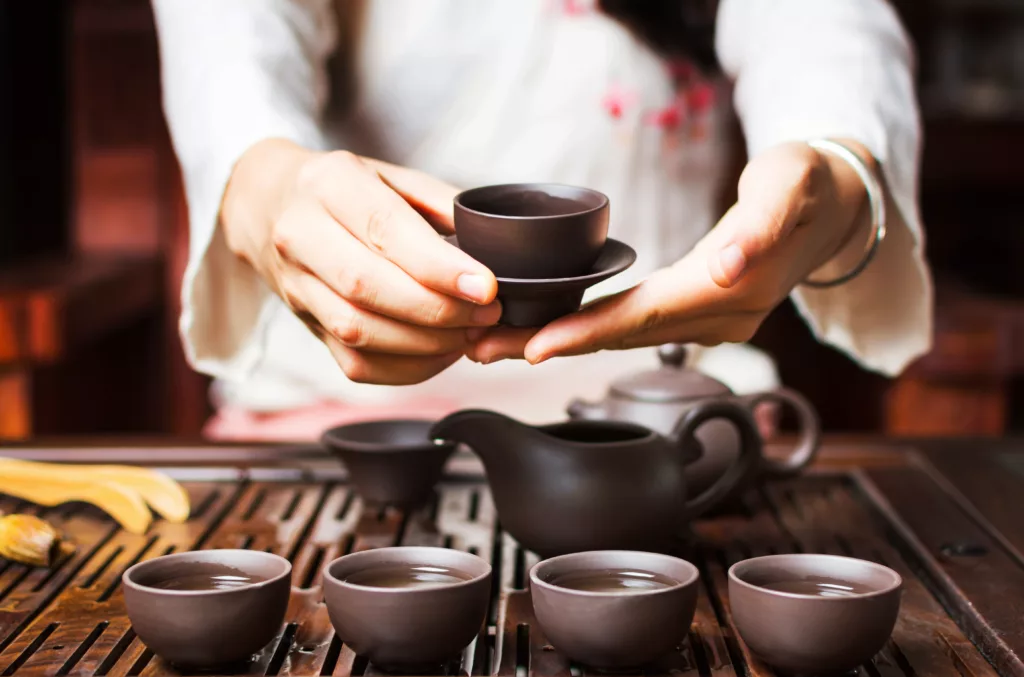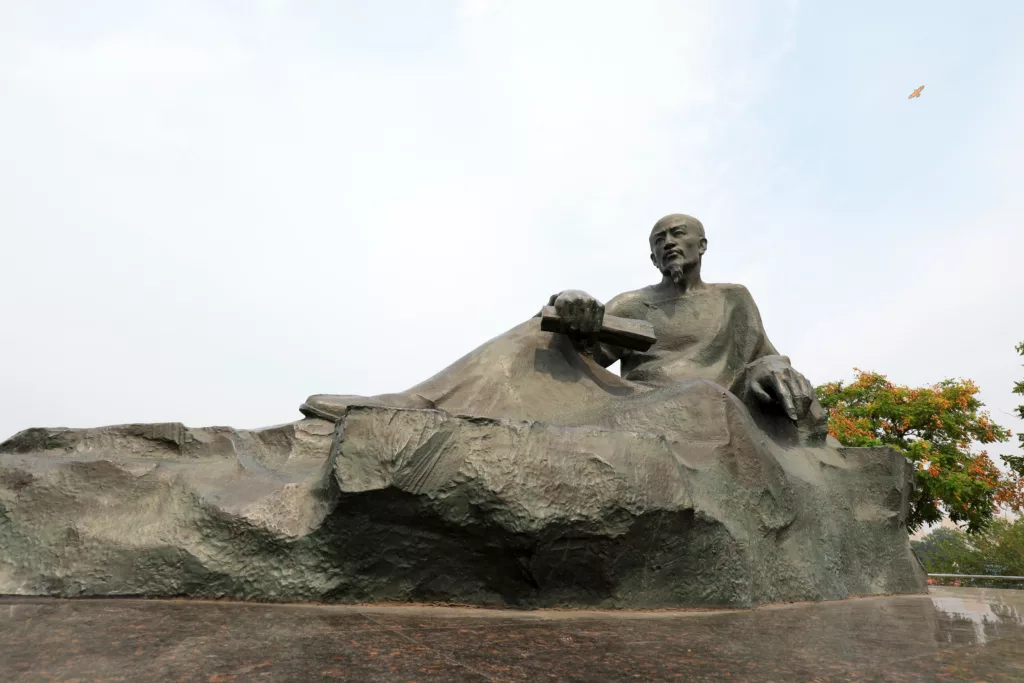Welcome to Beijing, a city where the ancient collides with the contemporary. Its glass and steel skyscrapers overlook historic temples and palaces, illustrating a vibrant contrast between tradition and innovation. Renowned for its palaces, temples, and stone walls, Beijing’s rich history coexists with its bustling, modern rhythm. Every street, meal, and encounter in this city promises a unique and unforgettable experience. Our curated list of 18 things to do in Beijing takes you beyond the city’s traditional attractions and reveals some hidden gems just off the beaten path. Each location offers its own adventure, illuminating a different aspect of Beijing’s complex identity.
So, let’s embark on a journey that delves into Beijing’s distinctive charm and unearths its lesser-known treasures.
1. Explore the Great Wall of China
Begin your adventure in Beijing with the Great Wall of China, a monumental feat of ancient engineering and a symbol of China’s resilience and ingenuity. This expansive structure, stretching thousands of miles, offers a glimpse into the country’s storied past and breathtaking landscapes.
The construction of the Great Wall began as early as the 7th century BC, with various states building fortifications to protect their territories. The most well-preserved and iconic parts of the wall that we see today were built by the Ming Dynasty (1368–1644), serving both as a military defense and a symbol of the empire’s might.
While it is a myth that the Great Wall is visible from space, its magnitude is truly awe-inspiring on the ground. It traverses diverse terrains, from mountains to deserts, and each section tells its own unique historical tale. Some of the sections are remarkably well-preserved, while others bear the marks of time and nature’s elements.
Opt for a well-trodden section like Badaling for its accessibility and comprehensive facilities, or if you’re up for a more challenging hike, head to the wilder section of Jinshanling. Either way, the panoramic views from atop the wall are sure to take your breath away.
Voyagix Tips
Before heading to the Great Wall, here’s some essential traveler’s information:
- Timing: Both Badaling and Jinshanling sections open from 6:30 AM to 7:00 PM during summer (April to October), and from 7:00 AM to 6:00 PM during winter (November to March).
- Ticket Information: Tickets can be purchased on-site, but to avoid long queues, especially at popular sections like Badaling, it’s advisable to book online. Here’s the link to the Badaling Great Wall official website and Jinshanling Great Wall official website.
- Travel Tips: Wear comfortable hiking shoes and bring plenty of water and sun protection. The climbs can be steep, and facilities are limited once you’re on the wall.
The Great Wall of China is not just a trip to a historic site; it’s a journey through time and a testament to human ambition and perseverance. So, whether you’re marveling at the ancient bricks under your fingertips or gazing out at the sprawling landscapes, remember, you’re walking in the footsteps of history.
2. Visit the Forbidden City
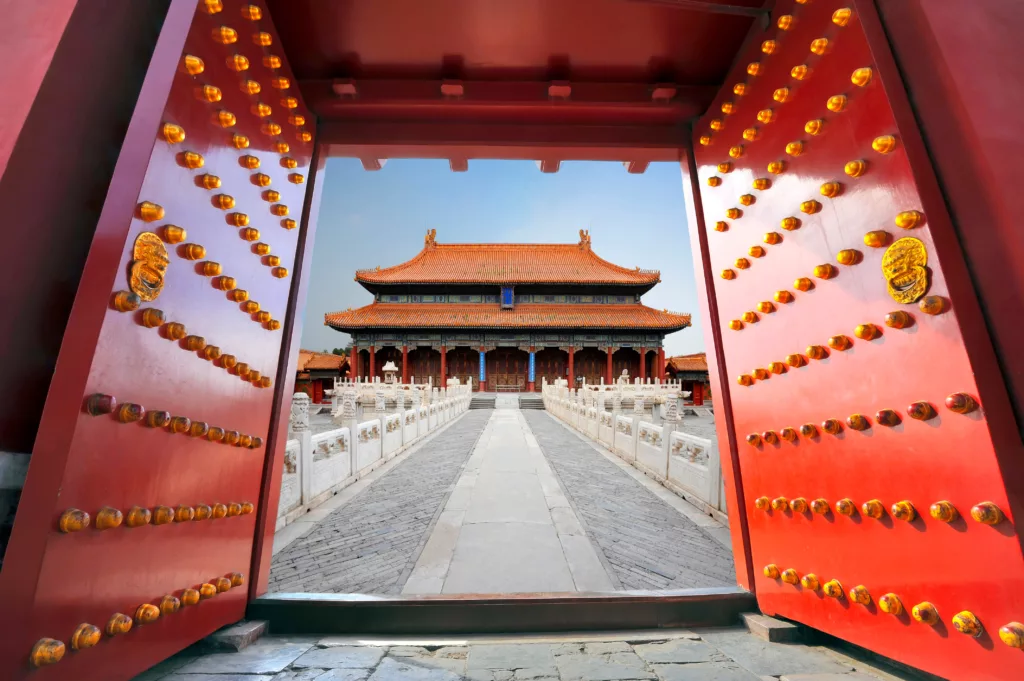
Next on your Beijing journey is the Forbidden City, a monumental palace complex that resonates with tales of China’s imperial past. As a UNESCO World Heritage site and the world’s largest palace complex, it served as the political and ceremonial center of Chinese government for almost 500 years.
The Forbidden City, known in China as the Palace Museum, was the imperial palace from the Ming Dynasty to the end of the Qing Dynasty (1420 to 1912). It was home to 24 emperors and a vast court of bureaucrats, concubines, and eunuchs. Its grandeur is unparalleled, with approximately 980 surviving buildings spread across 180 acres, adorned with golden roofs, red walls, and a staggering collection of antiques and treasures.
Its name, the “Forbidden City,” is derived from the ancient belief that the Emperor, being the Son of Heaven, was at the center of the universe, and thus his palace was sacred ground that could not be easily accessed by common people.
Visiting the Forbidden City is like traveling through time. As you wander through the vast courtyards and intricate halls, you’ll feel the weight of centuries of history and the stories of those who lived, worked, and ruled here.
Voyagix Tips
Here are some tips for your visit to the Forbidden City:
- Timing: The Forbidden City is open from Tuesday to Sunday, from 8:30 AM to 5:00 PM (April to October), and 8:30 AM to 4:30 PM (November to March). Last entry is one hour before closing.
- Tickets: Tickets are sold until 4 PM (summer) and 3:30 PM (winter). It’s recommended to buy tickets online in advance to avoid long queues. Here’s the link to the Forbidden City’s official website.
- Travel Tips: Be prepared for a lot of walking and bring water and sun protection. Also, due to its popularity, try to visit early in the morning or late in the afternoon to avoid crowds.
Experiencing the Forbidden City offers an unrivaled perspective into China’s rich history and culture. As you explore its extensive grounds and exquisite architecture, you’ll be stepping into a world where imperial dragons ruled, and history was written.
3. Take a Stroll in the Summer Palace
Your next stop is the Summer Palace, an oasis of tranquility amid Beijing’s energetic cityscape. This iconic location is not only a masterpiece of Chinese landscape garden design but also a testament to the artistry and philosophy of traditional Chinese gardening.
The Summer Palace, spanning an impressive 2.9 square kilometers, is a harmonious blend of natural landscapes and architectural wonders. It was first constructed in 1750 and later rebuilt in 1886 and 1902 after damage during the Opium Wars. Known as a “royal garden museum,” it served as a summer resort for emperors, hence its name.
The palace is dominated by the Longevity Hill and the Kunming Lake, offering a refreshing retreat from the hustle and bustle of city life. Its majestic pavilions, intricate bridges, beautiful temples, and vibrant gardens invite visitors to appreciate the elegance of a bygone era.
Stroll around the vast Kunming Lake, admire the exquisite craftsmanship of the Long Corridor, and explore the numerous halls, pavilions, and towers that dot the landscape. Each building and natural feature is purposefully placed to create a harmonious balance and flow.
Voyagix Tips
Here’s what you need to know before visiting the Summer Palace:
- Timing: The Summer Palace is open all year round. From April to October, it opens from 6:30 AM to 6:00 PM, and from November to March, it’s open from 7:00 AM to 5:00 PM.
- Tickets: You can buy tickets at the entrance or book in advance online to avoid queues. Visit the Summer Palace’s official website for more information.
- Travel Tips: Dress comfortably as the park is vast and involves lots of walking. Also, visit early in the morning or late in the afternoon to enjoy a more peaceful experience.
Whether you’re admiring the imperial buildings or soaking up the natural beauty, the Summer Palace offers a glimpse into China’s regal past and a tranquil retreat away from the urban frenzy. This spectacular site embodies the essence of traditional Chinese gardening art and offers an unrivaled place to unwind in the city.
4. Tour the Temple of Heaven
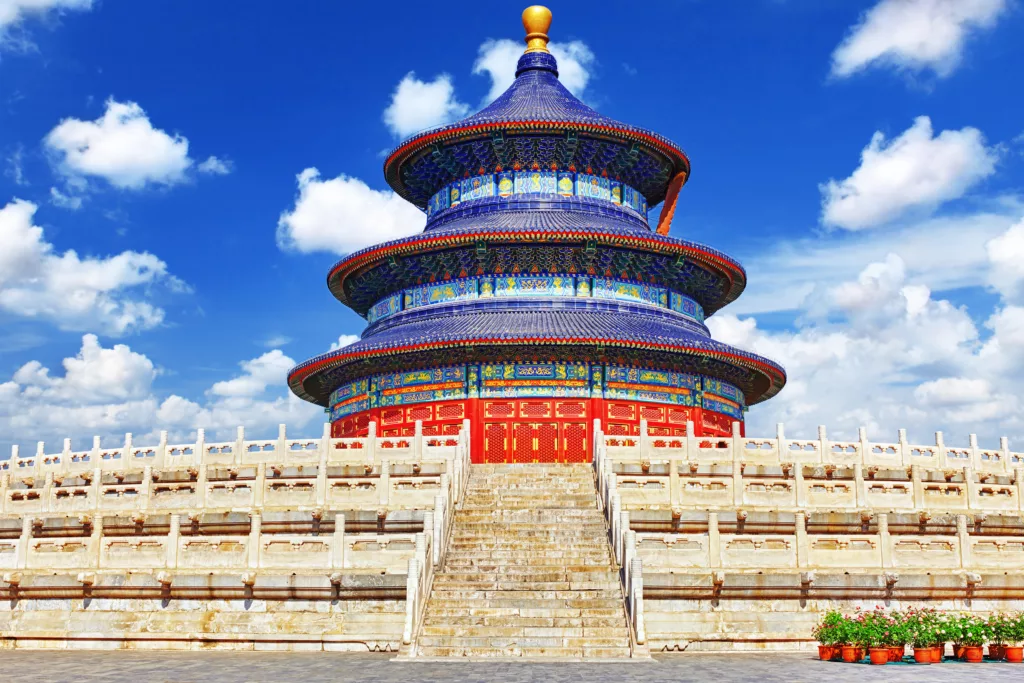
Next on your journey through Beijing’s history is the Temple of Heaven. This imperial complex, filled with religious buildings, was where emperors of the Ming and Qing dynasties prayed for good harvests and sought divine clearance.
Built in the early 15th century, the Temple of Heaven covers an area larger than the Forbidden City. Its layout reflects the dual nature of the earth and the heaven – the earthly part is square, symbolizing the world, while the heavenly part is round, symbolizing the heavens. This interplay of shapes and symbolism permeates the entire complex.
The primary buildings, including the Hall of Prayer for Good Harvests, the Imperial Vault of Heaven, and the Circular Mound Altar, are meticulously arranged along a central axis, and each bears architectural and symbolic significance. The Hall of Prayer for Good Harvests, with its iconic triple-gabled circular roof, is particularly stunning, illustrating the deep connection between the emperor, or ‘Son of Heaven’, and the divine.
Voyagix Tips
Here’s some helpful information for your visit to the Temple of Heaven:
- Timing: The Temple of Heaven is open all year round. From April to October, the opening hours are from 8:00 AM to 5:30 PM, and from November to March, it’s open from 8:00 AM to 5:00 PM.
- Tickets: Tickets can be purchased at the entrance or online. For more information and to book online, visit the Temple of Heaven’s official website.
- Travel Tips: The complex is large, so wear comfortable shoes. Also, consider hiring a guide or renting an audio guide to better understand the historical and cultural nuances of the site.
Visiting the Temple of Heaven is a journey into the spiritual history of China. As you admire its unique architecture and tranquil gardens, you’ll gain insight into the religious practices of China’s imperial past and the intricate connections between heaven and earth that define traditional Chinese cosmology.
5. Wander around Tiananmen Square
Continue your Beijing exploration by visiting Tiananmen Square, one of the world’s largest city squares and a site steeped in China’s political history. This expansive public plaza has borne witness to numerous historical events that have shaped the country’s modern identity.
Tiananmen Square, whose name translates to “Gate of Heavenly Peace,” is located in the heart of Beijing. Its name is derived from the Tiananmen Gate located to its north, separating it from the Forbidden City. Constructed in 1651 and significantly expanded in 1958, the square covers a vast area of 440,000 square meters and can accommodate about a million people.
The square holds several important sites, including the Monument to the People’s Heroes, the Great Hall of the People, the National Museum of China, and the Mausoleum of Mao Zedong. Each of these landmarks tells a story about China’s past and present.
Whether you’re watching the raising or lowering of the national flag, which happens at sunrise and sunset, respectively, or exploring its surrounding sites, a visit to Tiananmen Square offers an opportunity to reflect on China’s political history and its journey as a nation.
Voyagix Tips
Here’s some useful information for your visit:
- Timing: Tiananmen Square is open all day, every day, but individual attractions within the square have different operating hours. Please check their official websites for detailed information.
- Security: Security is high around the square, with luggage checks at each entrance. Carry your passport for identification.
- Travel Tips: The square can be quite busy during national holidays and the flag-raising ceremony. If you prefer a quieter experience, consider visiting at off-peak times.
Visiting Tiananmen Square offers a unique opportunity to stand at the crossroads of China’s past and future. As you explore this enormous public square, you’ll be walking on the same ground where history has unfolded, providing an invaluable perspective on the nation’s evolving identity.
6. Dive into Beijing’s Hutongs
Next, delve into the labyrinth of Beijing’s hutongs. These traditional alleyways, quintessential to Beijing’s urban fabric, offer a charming peek into the city’s past and a stark contrast to the towering modern skyscrapers.
The term “hutong” comes from the Mongolian word for “water well,” and historically, these narrow lanes and courtyards formed the residential neighborhoods around wells in the city. The hutongs encapsulate centuries-old ways of life and maintain a community-centric lifestyle that is often lost in large metropolises. Today, these maze-like passageways represent a living history of Beijing, brimming with culture, character, and local life.
While many hutongs have given way to modern development, several have been preserved and renovated, offering a mix of traditional residences, trendy boutiques, quaint cafes, and local restaurants. Some notable hutongs to explore include Nanluoguxiang, Yandai Xiejie, and Wudaoying Hutong.
Rent a bike or take a rickshaw tour to navigate these charming paths. Amid the stone drum gates and grey-brick siheyuan courtyards, you’ll encounter slices of everyday life and sense the soul of old Beijing.
Voyagix Tips
Here are some tips for your hutong adventure:
- Timing: Hutongs can be visited any time, but they are especially vibrant in the mornings and early evenings when locals are most active.
- Transportation: Consider hiring a rickshaw or renting a bike for an authentic hutong experience. Be mindful of traffic and pedestrians while navigating the narrow lanes.
- Etiquette: Hutongs are residential areas, so please respect the privacy of residents. Try to stay quiet and avoid taking photos of locals without their permission.
Exploring the hutongs of Beijing offers an immersive journey into the city’s past. As you meander through these historic lanes, you’ll get a glimpse of a way of life that thrives amidst the rapid modernization of Beijing, providing a deeper understanding of the city’s rich cultural tapestry.
7. Savor Beijing Duck in a Local Restaurant
A visit to Beijing wouldn’t be complete without tasting its renowned Beijing Duck. This mouthwatering delicacy, also known as Peking Duck, offers a culinary experience that is an integral part of the city’s cultural fabric.
Beijing Duck has a history that dates back to the Imperial Era, and the cooking method has been perfected over centuries to create a unique taste and texture. The duck is carefully selected, seasoned, and roasted in a closed or hung oven. The result is a tender meat with a crispy, glistening skin that’s served with spring onion, cucumber, sweet bean sauce, and pancakes for wrapping.
Beijing offers an abundance of restaurants where you can savor this classic dish. Some of the most well-known establishments include Quanjude and Bianyifang, both of which have their own time-honored methods for preparing the dish. Many restaurants also offer a demonstration of the duck being expertly carved at your table, adding an element of spectacle to the dining experience.
Voyagix Tips
Here are some tips for enjoying Beijing Duck:
- Reservations: This dish is incredibly popular, so making a reservation is recommended, especially at well-known restaurants.
- Eating: To fully appreciate the dish, place a slice of duck with a piece of spring onion and cucumber on a pancake, add some sweet bean sauce, then roll it up and enjoy the harmony of flavors.
- Variety: Some restaurants offer variations of the dish, including duck bone soup or duck pancakes. Don’t hesitate to try these unique takes on the classic Beijing Duck.
Savoring Beijing Duck is not merely about enjoying a meal; it’s about partaking in a long-standing culinary tradition that reflects the city’s rich history and culture. As the flavors melt in your mouth, you’ll appreciate why this iconic dish has stood the test of time and remains a must-try for any visitor to Beijing.
8. Visit the 798 Art District
For contemporary art lovers, the 798 Art District is a must-visit destination in Beijing. Brimming with numerous galleries, installations, and artists’ studios, this area has emerged as the heart of Beijing’s vibrant arts scene and a symbol of China’s cutting-edge artistic thought.
Located in a former factory complex in the northeast of the city, the 798 Art District gets its name from the factory that was built there in the 1950s. Its Bauhaus-style buildings, marked by large factory spaces and striking red brick walls, provide a unique setting for the contemporary art that fills the district.
As you stroll through the area, you’ll discover an eclectic mix of art, from large-scale sculptures and graffiti to experimental exhibitions and avant-garde performances. Renowned galleries like UCCA Center for Contemporary Art and Pace Gallery Beijing host exhibitions from both established and emerging artists, while various smaller spaces showcase a dynamic range of artwork.
Alongside the art, the district features a range of bookshops, cafes, and restaurants, adding to its creative and bohemian vibe. Whether you’re a serious art aficionado or simply a curious explorer, the 798 Art District offers an enriching and inspiring experience.
Voyagix Tips
Here are some tips for your visit:
- Timing: The 798 Art District is open all year, but operating hours of individual galleries may vary. It’s best to check their websites for the most current information.
- Events: The district hosts the annual 798 Art Festival and Beijing Design Week, making it an exciting time to visit.
- Getting There: The district is accessible by public transport. You can take bus No. 401, 402, 405, 445, or 909 to Dashanzi Lukou Nan, or you can take Subway Line 14 to Wangjing South Station and then a short taxi ride.
Exploring the 798 Art District offers an exciting journey into Beijing’s flourishing contemporary art scene. As you navigate the former factory buildings turned galleries and installations, you’ll get a taste of China’s dynamic and evolving cultural landscape.
9. Check Out the National Museum of China
Step into a world of historic artifacts and cultural relics at the National Museum of China. This prestigious institution, one of the largest and most comprehensive museums in the world, is a trove of Chinese history and culture, offering a deep dive into the country’s fascinating past.
The museum is conveniently located on the eastern side of Tiananmen Square, housed in an imposing building that mirrors the grandeur of its contents. In 2003, the National Museum of China was established through the merging of two separate museums: the Museum of the Chinese Revolution, chronicling modern Chinese history, and the National Museum of Chinese History, focusing on the ancient past.
Today, the National Museum of China houses an extensive collection of over a million items. It covers everything from ancient bronze ware, ceramics, and jade artifacts to items related to the founding of the People’s Republic of China. Highlights include the Ancient China and The Road to Rejuvenation exhibits, which provide an excellent overview of the country’s history.
Voyagix Tips
Here’s some useful information for your visit:
- Timing: The museum is open from Tuesday to Sunday, from 9:00 AM to 5:00 PM, with last admission at 4:00 PM.
- Tickets: Admission is free, but you need to bring your passport and get a ticket at the entrance. Advanced online booking is also available through the museum’s official website.
- Guided Tours: Consider taking a guided tour to fully appreciate the exhibits. Audio guides in various languages are available for rent.
A visit to the National Museum of China is a captivating journey through time. As you browse the impressive collection, you’ll gain a profound understanding of China’s rich and diverse heritage. From ancient dynasties to contemporary transformations, the story of China unfolds before your eyes, offering insights that extend far beyond the walls of the museum.
10. Go Shopping at the Silk Market
Immerse yourself in Beijing’s commercial spirit by visiting the famed Silk Market. This bustling shopping area offers a chance to bargain for a wide array of authentic Chinese goods such as silk, tea, pearls, electronics, and much more.
The Silk Market, located in the Chaoyang District, is one of the city’s most popular shopping destinations for both locals and tourists. Originally an outdoor market, it transformed into a multi-story shopping mall in 2005, while retaining its trademark bustling atmosphere and a plethora of merchandise.
While the market is named for its historical specialty, silk, you’ll find far more than just fabric here. Over 1,700 retail vendors spread across five floors sell a myriad of items including Chinese tea sets, calligraphy tools, jewelry, watches, clothing, and souvenirs. It’s the perfect place to pick up gifts or mementos of your Beijing trip.
Remember, haggling is a standard practice here, and often expected. Don’t be shy to negotiate prices—it’s part of the fun and the cultural experience!
Voyagix Tips
Here’s some useful information for your Silk Market visit:
- Timing: The market operates daily from 9:30 AM to 9:00 PM.
- Location: The Silk Market is easily accessible, situated just east of the city center and close to the Jianguomen Subway Station.
- Shopping Tips: Always negotiate the price, starting at about a quarter of the asking price. And be sure to check the quality of goods before purchasing.
Visiting the Silk Market is more than just a shopping trip—it’s an interactive cultural experience. The vibrant atmosphere, the thrill of haggling, and the range of goods on offer combine to create an authentic Beijing experience. As you walk away with your well-bargained treasures, you’ll carry with you a piece of Beijing’s commercial spirit.
11. Discover Beihai Park
Escape the urban hustle and bustle by retreating to Beihai Park, one of the oldest, most authentically preserved imperial gardens in China. A haven of peace and tranquility, this expansive park provides a perfect blend of nature, culture, and history right in the heart of Beijing.
Beihai Park dates back over a thousand years and has witnessed the ebb and flow of Chinese dynasties. The Beihai Park, originally a royal garden, opened its doors to the public in 1925. Its design embodies the traditional Chinese philosophy of “one pool and three hills”, manifesting the perfect harmony between humans and nature, a value deeply treasured in Chinese culture.
The park is centered around Beihai Lake, dotted with beautifully landscaped islands, interconnected by arched bridges. The largest island, Qionghua Island, is home to the towering White Dagoba, a Tibetan-style stupa that has become an iconic landmark of the park. Other attractions include the quiet and beautiful Hao Pu Creek Garden, the ancient Circular City with its precious cultural relics, and the Nine-Dragon Screen, an impressive glazed tile wall featuring nine vividly colored dragons.
Voyagix Tips
Here are some details for your visit to Beihai Park:
- Timing: The park is open year-round, from 6:00 AM to 8:00 PM. Note that individual attractions within the park may have different operating hours.
- Tickets: There’s an entrance fee for the park, with separate tickets for specific attractions. Fees vary depending on the season.
- Activities: Enjoy a leisurely boat ride on the lake, take a quiet stroll along the paths, or simply sit and admire the beautiful scenery. The park is also a great spot for picnics.
Immersing yourself in Beihai Park offers a rejuvenating experience unlike any other in Beijing. As you explore its tranquil landscapes and stunning historic sites, you’ll understand why emperors chose this site as a place of relaxation and inspiration. With every step, you’ll feel a connection to China’s imperial past and an appreciation for its enduring natural beauty.
12. Watch a Peking Opera Performance
Immerse yourself in a vibrant cultural experience by watching a traditional Peking Opera performance. Known for its vibrant costumes, melodious music, and expressive artistry, this centuries-old art form offers an unforgettable spectacle that brings Chinese culture to life.
Peking Opera, also known as Beijing Opera, is a quintessential representation of Chinese performing arts. Its roots can be traced back over 200 years during the Qing Dynasty, synthesizing elements of music, dance, theater, and acrobatics into an enchanting performance style. The stories usually revolve around historical events, folklore, or classic literature, filled with symbolic meaning and moral teachings.
Characters in Peking Opera are differentiated by their elaborate costumes and brightly painted faces. Each color used in the makeup represents a different character trait: red for loyalty, white for treachery, black for integrity, and so on. The performance itself is a feast for the eyes and ears, combining dramatic singing, stylized acting, intricate gestures, and acrobatic fighting.
Voyagix Tips
Here’s some practical information for your Peking Opera experience:
- Locations: Performances can be enjoyed at various theaters in Beijing. The Beijing Liyuan Theatre and Huguang Guild Hall are two popular venues.
- Timing: Show times vary depending on the venue. Most performances take place in the evening, typically starting around 7:30 PM.
- Tickets: Ticket prices vary based on the venue and seating. You can book tickets online or at the venue.
- Language: The performances are usually in Mandarin, but English subtitles are often provided on side screens.
Experiencing a Peking Opera performance is like stepping into a living painting, where stories unfold in vivid colors and resonant sounds. It’s not just a show—it’s an invitation to delve deeper into the richness of Chinese culture. As the curtain falls, you’ll carry with you a piece of China’s historical grandeur and artistic legacy.
13. Experience Serenity at the Lama Temple
Escape the city’s hustle and bustle and step into the tranquility of the Lama Temple, one of the most important Tibetan Buddhist monasteries in the world. The harmony of its architecture, combined with an aura of peacefulness, makes it a must-visit on your Beijing itinerary.
Originally built in 1694 as a prince’s residence during the Qing Dynasty, the Lama Temple, or Yonghe Temple as it’s officially known, transitioned to a lamasery in 1744. This magnificent temple complex has since become a place of worship for Tibetan Buddhists and features an impressive fusion of Han Chinese and Tibetan architectural styles. It is also known as the “Palace of Peace and Harmony.”
Within its vermilion walls, you’ll find beautifully landscaped courtyards, stunning halls filled with Buddhist statues, and the largest wooden Buddha statue in the world. Carved from a single piece of white sandalwood, the statue stands a whopping 18 meters high and is a sight to behold.
Voyagix Tips
Here’s some helpful information for your visit:
- Timing: The Lama Temple is open from 9:00 AM to 4:30 PM, and the ticket office closes at 4:00 PM.
- Tickets: The entrance fee is 25 RMB. Tickets can be purchased at the entrance.
- Location: The temple is located in the Dongcheng District, easily accessible by public transportation.
- Note: Remember, this is a functioning Buddhist temple where people come to worship. Please be respectful, particularly during prayer times.
The Lama Temple not only stands as a testament to Beijing’s rich cultural diversity but also offers a serene retreat. As you walk through its sacred halls, let the aroma of incense and the sound of monks chanting soothe your senses. This spiritual sanctuary provides a moment of calm amidst the whirlwind of exploring Beijing’s many wonders.
14. Explore the Old Summer Palace
Step back in time at the Old Summer Palace, also known as Yuanmingyuan. This vast complex is a beautiful blend of natural landscapes and architectural ruins, each whispering tales of its compelling historical past.
The Old Summer Palace was once the grandest and most elaborate imperial garden in China, serving as the summer residence for Qing Dynasty emperors. Designed in the 18th century, it was a harmonious fusion of exquisite gardens, magnificent pavilions, and a network of scenic lakes and waterways. However, in 1860 during the Second Opium War, the palace was plundered and burned down by Anglo-French forces, leaving behind a poignant reminder of a lost cultural heritage.
Today, visitors can explore the remnants of this once-magnificent garden. Wander through its expansive grounds, and you’ll discover half-ruined, half-reclaimed by nature buildings and bridges, creating a starkly romantic landscape. Visitors feel the grandeur and glory of the past palpably among the ruins, stirring their imaginations.
Voyagix Tips
For those planning a visit, here’s some useful information:
- Timing: The Old Summer Palace is open from 7:00 AM to 5:30 PM in winter (November to March) and until 6:00 PM in summer (April to October).
- Tickets: Entrance fee is 10 RMB, with an additional fee for certain attractions within the park. You can purchase tickets at the entrance or online on their official website.
- Location: The park is located in the Haidian District, northwest of central Beijing.
As you meander through the Old Summer Palace, let your imagination run wild as you picture the splendors of a bygone era. It’s a poignant experience, offering a deeper understanding of China’s history and a reflection on the impermanence of human creation.
15. Enjoy a Tea Ceremony at the Maliandao Tea Market
For a truly authentic experience, step off the beaten track and immerse yourself in Chinese tea culture at the Maliandao Tea Market. Known as Beijing’s largest tea market, it offers an opportunity to explore the vast variety of teas available and take part in a traditional tea ceremony.
Maliandao Tea Market, located in Xicheng District, spans over a kilometer, housing hundreds of shops selling teas from across China. From the smoky notes of Lapsang Souchong to the delicate sweetness of Tieguanyin, there’s a tea to suit every palate. The market isn’t just about buying tea; it’s about experiencing the art of tea itself.
Many of the vendors, knowledgeable in their craft, will invite you to sit down and taste their teas in a traditional tea ceremony. This isn’t just about drinking tea; it’s a meditative practice focusing on the aroma, taste, and appreciation of the tea-making process.
Voyagix tips
Here are some helpful tips for your visit:
- Timing: The market generally operates from 9:00 AM to 6:00 PM, with some shops extending their hours to 7:00 PM.
- Location: Maliandao Tea Market is in the Xicheng District of Beijing. You can easily get there by subway or taxi.
- Tips: Don’t be afraid to taste before you buy, and remember, bargaining is a part of the experience!
A trip to the Maliandao Tea Market is not just a shopping expedition; it’s a journey into the heart of Chinese tea culture. It’s a place where you can slow down, savour the moment, and embrace the wisdom that the art of tea has to offer. It’s an experience that you’ll not only remember but will carry with you in your heart.
16. Discover Cao Xueqin Memorial Hall
For literature enthusiasts or those curious about China’s rich literary heritage, the Cao Xueqin Memorial Hall is a lesser-known site that offers an insightful journey into the life of one of China’s literary giants, Cao Xueqin, the author of “Dream of the Red Chamber”.
Cao Xueqin, widely regarded as one of China’s greatest novelists, penned the “Dream of the Red Chamber” – an epic masterpiece regarded as one of the Four Great Classical Novels of Chinese literature. This novel provides a detailed, panoramic portrayal of the complex social structures and intimate family relationships of Qing Dynasty China.
The memorial, located in Beijing’s Changping District, was built on the site of the ancestral residence of the Cao family. It houses a variety of exhibits related to Cao Xueqin and his great work, including ancient manuscripts, artworks inspired by the novel, and a reconstruction of scenes from “Dream of the Red Chamber”.
Voyagix Tips
Here are some useful tips for visitors:
- Timing: The Memorial Hall is open from 9:00 AM to 4:30 PM and is closed on Mondays.
- Tickets: The entrance fee is 30 RMB. Tickets can be bought on-site or online from the official website.
- Location: The memorial is located in the Changping District, north of central Beijing.
A visit to the Cao Xueqin Memorial Hall is more than a glimpse into the life of a remarkable novelist; it’s an immersion in China’s literary and cultural history. As you explore, you’ll gain a deeper appreciation of the richness of Chinese literature and its enduring influence on society and culture.
17. Visit the Red Brick Art Museum
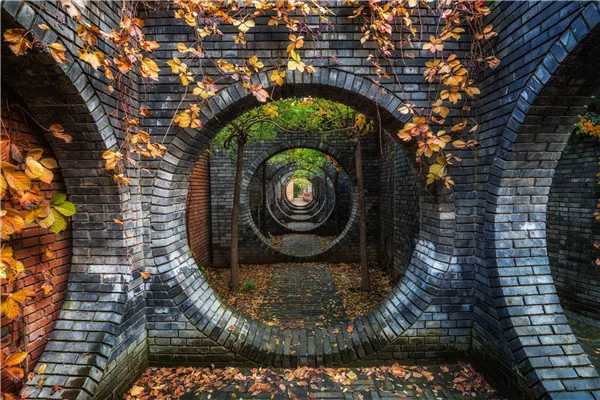
For art lovers seeking a unique and offbeat experience, the Red Brick Art Museum is an absolute must-visit. Located in the northeastern Chaoyang District, this museum is a gem of contemporary Chinese and international art set within a striking architectural space.
Collectors Yan Shijie and Cao Mei founded the Red Brick Art Museum in 2014, dedicating it to the collection, research, and exhibition of contemporary art. It houses a rich array of artwork that challenges traditional concepts and explores innovative ideas and forms. Not confined to any one medium, the exhibitions feature painting, sculpture, installations, and multimedia presentations.
The museum itself is a masterpiece. Designed by Dong Yugan, it uses red bricks to create a fluid space that integrates art, nature, and architecture. The design, consisting of numerous courtyards and gardens, creates a dialogue with traditional Chinese architecture while simultaneously breaking from it.
Voyagix Tips
Planning your visit? Here are some details:
- Timing: The museum is open from Tuesday to Sunday, 10:00 AM – 5:30 PM.
- Admission: Ticket prices vary depending on the exhibitions. Check their official website for the latest information.
- Location: The Red Brick Art Museum is located in the Chaoyang District.
The Red Brick Art Museum is more than a space for art; it’s an artistic experience in itself. As you move through the exhibitions and the building, you’ll find yourself engaged in a dynamic dialogue between the old and the new, the traditional and the modern, art and space.
18. Bike around the Olympic Park
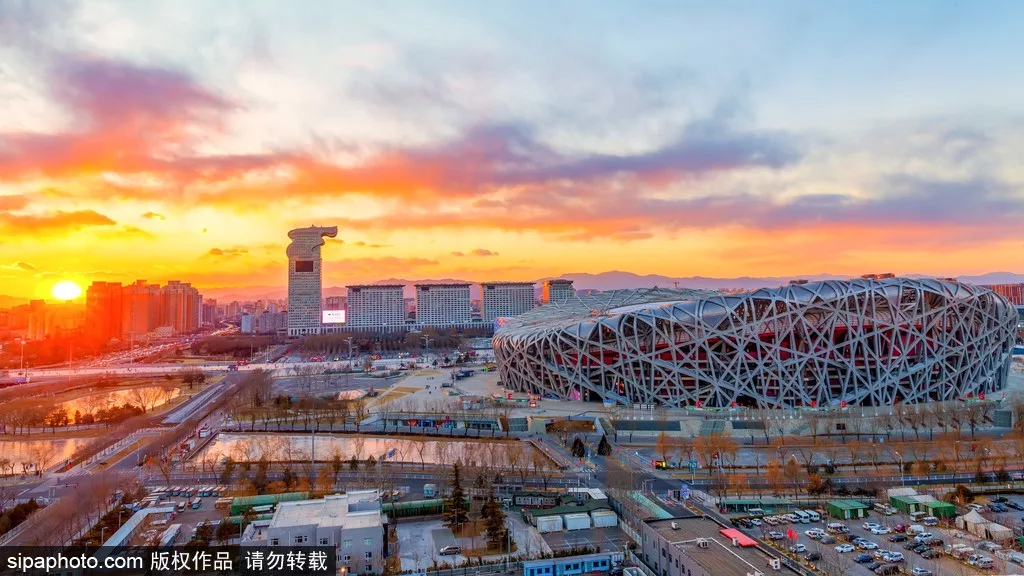
Our final suggestion for your Beijing adventure takes you to the futuristic Olympic Park, an expansive complex constructed for the 2008 Summer Olympics. Here, you can rent a bike and explore some of Beijing’s most stunning modern architecture, including the iconic Bird’s Nest and the Water Cube.
The Beijing National Stadium, or the Bird’s Nest, as it’s commonly known, was the centerpiece of the 2008 Olympics. Designed by renowned architects Herzog & de Meuron, its unique design resembles a bird’s nest, giving the structure its name. Today, it hosts a variety of sporting and entertainment events and also houses a small shopping center.
Just across from the Bird’s Nest, you’ll find the Water Cube, officially named the Beijing National Aquatics Center. It was the venue for the Olympic swimming events. At night, the Water Cube transforms into a spectacular light display, its translucent exterior illuminated with a rainbow of colors.
Voyagix Tips
Here’s some additional information for your visit:
- Timing: The park is open all day, but the buildings have specific visiting hours. The Bird’s Nest is open from 9 AM to 9 PM, while the Water Cube is open from 9 AM to 8 PM.
- Bike Rentals: You can rent bikes from various points around the park for around 20 RMB per hour. A valid ID is needed for rentals.
- Location: The Olympic Park is located in the Chaoyang District of Beijing.
The Olympic Park isn’t just a symbol of China’s arrival on the global stage, it’s a testament to its commitment to innovative design and urban development. As you pedal around this magnificent site, you’re not just exploring a park – you’re experiencing a part of modern history.
Conclusion
Beijing, with its historical richness and modern vision, offers a unique travel journey. It caters to diverse tastes, presenting architectural splendors, an evolving art scene, and an array of culinary treasures. This guide of 18 things to do showcases Beijing’s past, present, and hidden gems that make it so captivating. Each visit unearths a new layer of the city. So, whether you’re following the footsteps of emperors at the Forbidden City, delighting in Peking duck’s rich flavors, or appreciating contemporary art in transformed spaces, you’re carving your own Beijing narrative. So, get ready to delve into this enthralling mix of tradition and modernity, and let Beijing mesmerize you just as it has countless travelers before. As you traverse this remarkable city, we hope you chart your own journey, create your own stories, and let Beijing’s magic take hold.

